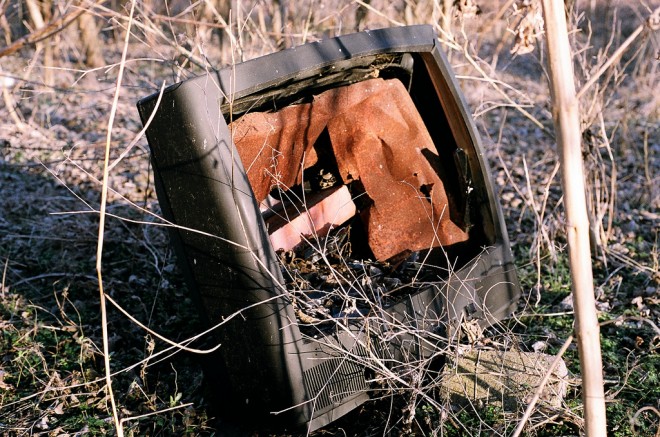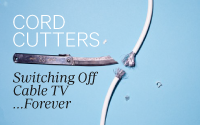
Photo: Dan Machold/Flickr
So, you lastly decided to get back at that evil, treacherous cable firm that’s been sucking you dry for so many years. You’re going to cut the cord and watch all your Tv on-line. Of course, you’ll nonetheless be paying for broadband. But there’s no way those cable fat cats will get that further $ 1,000 per year it charges you to add Television channels to your net service.
Go ahead and stick it to the man — it feels good. But the truth is, you’re not worth as a lot to the cable organization as you may well think.
When cable clients cut the cord, that’s not income lost strictly to Comcast or Time Warner or whomever your cable provider might be. A lot of of your dollars get passed on to cable channels themselves in what the industry calls carriage fees. These fees are what spend-Television companies spend for the right to carry a particular network.
Ballooning carriage costs are one particular of the crucial factors contributing to our rising cable bills. According to current investigation, multi-channel cable tv subscription expenses have gone up an average of 7 percent in the U.S. in the final year, and financial pressures have led roughly 30 percent of Americans to cut back on their bundled cable packages. Networks are increasingly moving to provide streaming options, but a lot of of the net-and-internet-based possibilities are only obtainable to existing cable subscribers. One particular notable exception is HBO, which announced Thursday it would start experimenting with a streaming service that doesn’t call for a cable subscription — but only in four Scandanavian nations, in a industry about a single-tenth the size of the U.S.
So even though it seems a shift toward streaming Television is on the horizon, for now the networks continue to play the same game: assembling large bundles of enticing offerings and charging the cable firms huge carriage charges for the rights to broadcast them.
The network with the most bargaining chips: ESPN.
Cable market researchers say ESPN commands the highest carriage charges in the business by far — practically $ five per month per subscriber. Paired with ESPN2, the twin sports juggernauts account for about 20 percent of the wholesale expense of a cable subscription.
With roughly 100 million U.S. households shelling out for some kind of spend Television service each and every month, carriage costs alone contribute billions of dollars to ESPN’s bottom line.
Cord-cutters may well be prepared to spend $ 5 a month for an ESPN app. But such à la carte options are as unlikely to come to the U.S. marketplace anytime soon. That’s due to the fact cable providers are hardly ever creating their own à la carte offers. For instance, Comcast and Disney reached a ten-year deal in January that sets fees for 70 networks under Disney’s manage. The list of networks contains not just the ESPN properties, but Disney’s own branded channels as nicely as ABC’s cable and broadcast stations. For Disney, providing a standalone ESPN app untethered from a cable subscription would mean losing its leverage more than cable providers to take the complete bundle.
Any cable channel that goes the route of a subscription-based, à la carte, direct-to-consumer app or internet site — like HBO’s new experiment — also puts itself at greater threat from piracy, says Dave Tice, who follows the cable sector for industry analysis firm GfK Media. A particular quantity of piracy of cable shows already takes place, to be confident. But viewers are hardly canceling their cable subscriptions en masse in favor of BitTorrent, even if they download a pirated show or two. But a channel that abandons carriage costs in favor of an app puts itself a lot closer to an all-or-absolutely nothing scenario.
“If (viewers) are all nice and legal and go to legal websites, then in theory that money could flow back to the networks, to the content creators,” Tice says. “But if men and women are going to ‘unofficial websites,’ then that’s income that doesn’t return at all.”
In terms of each carriage charges and piracy, sports channels have the most to lose. They can bank on larger charges since they offer one of the couple of remaining types of programming viewers want to watch live. They want to see the game as it happens. For that exact same cause, sports channel programming has practically no resale worth. No doubt plenty of new fans downloaded earlier seasons of AMC’s Breaking Negative to catch up ahead of the season 5 premiere a couple of weeks ago. This is excellent for AMC, which receives a lot lower carriage fees than ESPN but can charge $ two.99 per episode of Breaking Negative the day right after it very first airs. By comparison, no a single wants to download last evening’s game on iTunes, which is why sports leagues and promoters have not been shy about going right after live-streaming sites like justin.tv. As a result of sports’ unique position in the Tv landscape, it’s grow to be a type of Iron Curtain keeping cable subscribers locked in and cord-cutters locked out.
“If you want to watch a thing in actual time, (cord-cutting) is not the way you’re carrying out it,” says cable business analyst Bruce Leichtman. “The vast majority of men and women don’t want to watch Television this way.”
Leichtman says that, for now, cord-cutting for its personal sake remains a micro-trend among gadget geeks. Among the roughly 13 to 15 % of Television-owning households that don’t subscribe to some type of pay-Television service, he says most are just attempting to save funds on their monthly bills — an unlikely demographic to invest heavily in cord-cutting tech.
“Most who quit cable do it for financial motives,” Leichtman says.
Despite the ever-escalating menu of possibilities, from Netflix to Hulu to Roku, the worst economic crisis given that the Great Depression hasn’t sent viewers abandoning cable in numbers substantial adequate to budge the cable Tv business model. For geeks who don’t care about sports, it’s not a massive deal: They can get most of what they want when they want it (except possibly season two of Game of Thrones).
For everybody else, the future still looks like increasing monthly bills and waiting for the cable guy to come sometime amongst the hours of 12:01 a.m. and 11:59 p.m.
He’ll be sure to call ahead.









